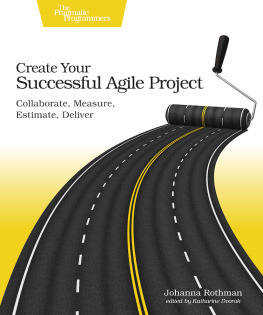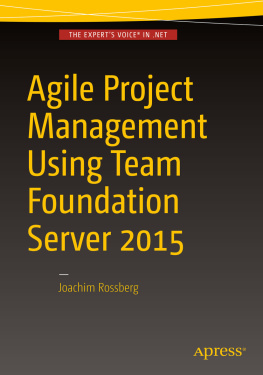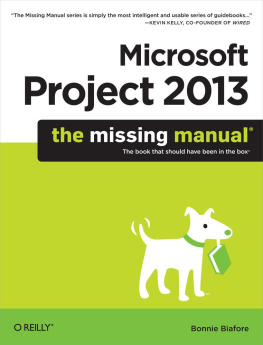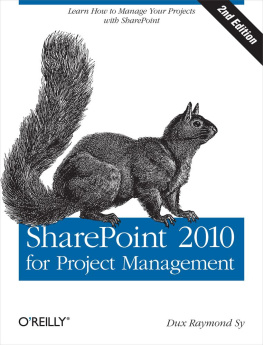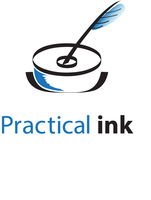I thank Fred Nothnagel, who runs Wednesday is Networking Day, anetworking group for job-seekers in the Boston area, for my firstopportunity to speak about this topic. When we spoke in advance of themeeting, he suggested I title my talk Get Your Next Job the Agile Way.
Well, that started my wheels turning. By the time Id finished preparingfor the talk, Id outlined this book in my head, and tested it with the20 or so people at the meeting. They had several aha moments.
I thank my reviewers: Holly Bourquin, Shaina Druy, Brian Edlund, YvesHanoulle, Peter Harris, Bobbi Heath, Lori Howard, Ruth Koch-Ashton,Gerry Kirk, Andy Lester, Ed Schweppe, Dave Smith, Rich Stone, MikeTaylor, James Ward, Serhiy Yevtushenko. I thank Rebecca Airmet, NancyGroth, and Dave McClintock for their great editing.
Any mistakes are mine.
Introduction
Youre looking for a job. Maybe youve just graduated from college. Maybe youve been laid off. Or, maybe youve decided that its time for a career change. Maybe you want a better job. You might even have a better or different reason than the ones Ive listed here.
Congratulations!
Its exciting and scary and unpredictable and overwhelming. If you are anything like me, you can be optimistic one moment, pessimistic the next. You can think you have it all set and then your stack of company brochures slides off the table onto the floor and you think, Oh boy, I do not have anything together.
And, because its all of those things, and your emotions fly up and down, you just might need some help to find that emotional balance and intellectual focus to stay on track with your job search.
Ive hired or consulted on hiring hundreds of people. Ive trained thousands of people all over the world about how to hire. Ive written two books about hiring. The most recent is Hiring Geeks That Fit. Many people think that finding a job is the inverse of hiring. Its not.
Finding a job is dependent on other people. It is an emergent project, where you cannot predict the end date. You create opportunities and take advantage of serendipity.
If you are looking for a job, this book will help you create your system for finding a job. Then, with your system in place, you can iterate on deciding what job to look for, what your rsum should look like, what companies to target, how to interview, and how to get feedback on everything.
This book will help you.
Your job: Find fulfilling work.
My job: Show you a system that works.
Part 1: Learn to Manage Your Job Search Project
Do you like looking for a job? Almost no one does. Its overwhelming. You already know youre going to get rejected from jobs that you are qualified for. If only you could get in the door
But, managing the rejection in a job hunt is part of your job search project. And, sadly, thats the part of the project that most job seekers miss. If you create a project, or a system, you can manage your job search, and keep yourself moving, right onto the next potential opportunity. Thats what this book is about.
Years ago, when everyone advertised in the Sunday paper, you had just one place to look for jobs. Now, there are industry-specific and general online job boards to find and peruse. You need to become a networker extraordinaire, online and in-person. Youll be making decision after decision, each of which will seem to affect your career.
When no one responds to your rsum, it feels like a direct punch to your self-esteem. Dont be surprised: we identify closely with our work. When no one responds to your rsum, you feel personally rejected. When someone asks you for a phone screen or an interview, you feel great! You add these emotional highs and lows to an already intricate, non-linear project with many interruptions and what do you get? A complex project where you can become easily overwhelmed and lose your focus.
How many times have you wished for magic in your job hunt? Or, maybe youve hoped for the best? Nope, you know that magic is not going to happen. And hope is not a strategy. How do you maintain your progress and your sanity?
You can succeed with an open-ended big project like this. The key is to break your job search into small chunks of work that you can accomplish. You also need to track those chunks of work.
Well use two project management tools to accomplish this: the timebox and the personal kanban board.
A is when you say, Im only going to allow this task to take this much time. Then Im going to stop, no matter what. Youve boxed or limited the time for that work. Timeboxes are useful when the work can take forever and you want to stop for now, and assess where you are.
One-week timeboxes provide a cadence, a rhythm, for your work. That cadence helps you maintain your focus and overcome procrastination. The timebox also forces you to break your work into smaller pieces. That helps you complete specific tasks and feel a sense of accomplishment and progress. That feeling is invaluable in helping you focus, work on your next step, and feel good about your project and yourselfespecially when your self-esteem is such a big part of the project.
The personal kanban board helps you determine how much work you can do right now. (Kanban is Japanese for signboard.) A kanban board is a place where you can see and classify cards in a special way. The personal kanban board helps you see pending and upcoming tasksespecially those that are dependent on something outside your personal control, such as waiting for a response from an email or phone call. It will also provide you with feedback about whether you have over-committed yourself or can take on a bit more. It will help you to not commit to more work than you can actually complete in a single week.
I have noticed that I need both the structure of the big one-week timebox to help me organize my time, and the visualization of the small tasks on the personal kanban board when I work on large open-ended projects, such as a job search. Why? Because as my work moves, visually and physically, across the kanban board, I can see and celebrate what I have finished. That increases my motivation and maintains my focus.


